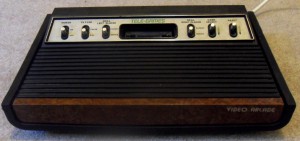It most likely will not be a surprise to some that I’m a fan of James Bond. It was my parents who got me into Bond when I was nine or ten, when my father picked up For Your Eyes Only on videodisc. I really enjoyed the film, and Dad obliged in getting me others. Pretty soon, I noticed he had a Bond book or two, and asked to borrow them. In the end, I found the Bond movies to be fairly hit or miss compared to the books, which I much preferred. For example, I consider Roger Moore to be a terrible Bond (For Your Eyes Only is his only outing I like), I didn’t care for the Pierce Brosnan movies, and I consider Daniel Craig to be closest to the original literary Bond, with Timothy Dalton coming a close second.
I have three of the original Ian Fleming novels (Casino Royale, Moonraker, and From Russia With Love), and five of the official continuation novels by John Gardner (Licence Renewed, For Special Services, Nobody Lives Forever, No Deals, Mr. Bond, and Scorpius). Despite my enjoyment of the Bond books in my teen years, I lost track of the series after Scorpius, and was only vaguely aware that Raymond Benson had taken over the series in the late 90’s. I read my existing books every so often, but hadn’t considered buying a new book.
So, I was a bit surprised this past weekend when I was staying at my parents’ house, to find a new Bond novel in hardcover in one of my parents’ many bookcases. The book, Carte Blanche by Jeffery Deaver, turned out to be a complete reboot of the series (similar to how Casino Royale rebooted the movie series). Intrigued, I decided to borrow it and read it.
Having read it, I have to say… I really like this book.
One of the biggest advantages of dumping the existing canon was getting rid of the nebulous timeframe in which Bond operates; considering the books had been set in “modern times” since the first one came out in 1953, it made taking the history seriously a little difficult. In some genres this isn’t really a problem, but in the ever-changing world of international espionage and politics, it becomes a tad troublesome. In Carte Blanche, Bond is reinvented as a relatively new agent of a British espionage agency called ODG after having served in Afghanistan. MI6 still exists in this timeline; the ODG performs the dirty and deniable espionage jobs that MI6 politically can no longer afford to do. M returns to being a male former Naval admiral; in the Benson books, the M character had been changed to one like Dame Judi Dench’s portrayal. Moneypenny and Mary Goodnight (Bond’s secretary, only seen in one film) return, as do Felix Leiter and Rene Mathis; all four characters are updated to fit the current times. Goodnight, for example, is described as constantly getting Titanic references thrown at her due to her looking like Kate Winslet, and Leiter maintains his cover as a CIA handler by posing as a blogger and journalist. A valuable addition to the Bond cast is Ophelia Maidenstone, ODG’s liasion to MI6 who assists Bond several times throughout the novel.
The main plot itself moves briskly, involving an investigation into an intercepted message which hints at a plot to kill thousands and affect British interests. More than other Bond books I’ve read before, the investigation takes several twists and turns, with more than one false lead not panning out. It’s not until the very end that everything becomes clear; while I was surprised by how it turned out, the final resolution did not come out left field per se. It still made a lot of sense and worked quite well. Several subplots stand out, including Bond’s dealing with a domestic British agent more concerned with his political power and glory than getting the mission done, and a side investigation into a Russian operation that touched Bond’s personal life.
I was highly impressed with how Jeffery Deaver rebooted the franchise; needless to say, I was disappointed to learn Deaver would not be continuing in the series, instead being replaced by William Boyd. In addition, Boyd’s new novel would not be following the reboot, taking place in 1969 instead. It seems a waste to me, especially as Deaver had left the door open to an overarching plot line.
Personally, I’m hoping Ian Fleming Publications allows Deaver or someone else to do the right thing and return to the rebooted timeline. In any event, I enjoyed Carte Blanche as a stand-alone Bond novel, and highly recommend it to anyone who enjoyed the original Bond novels.

